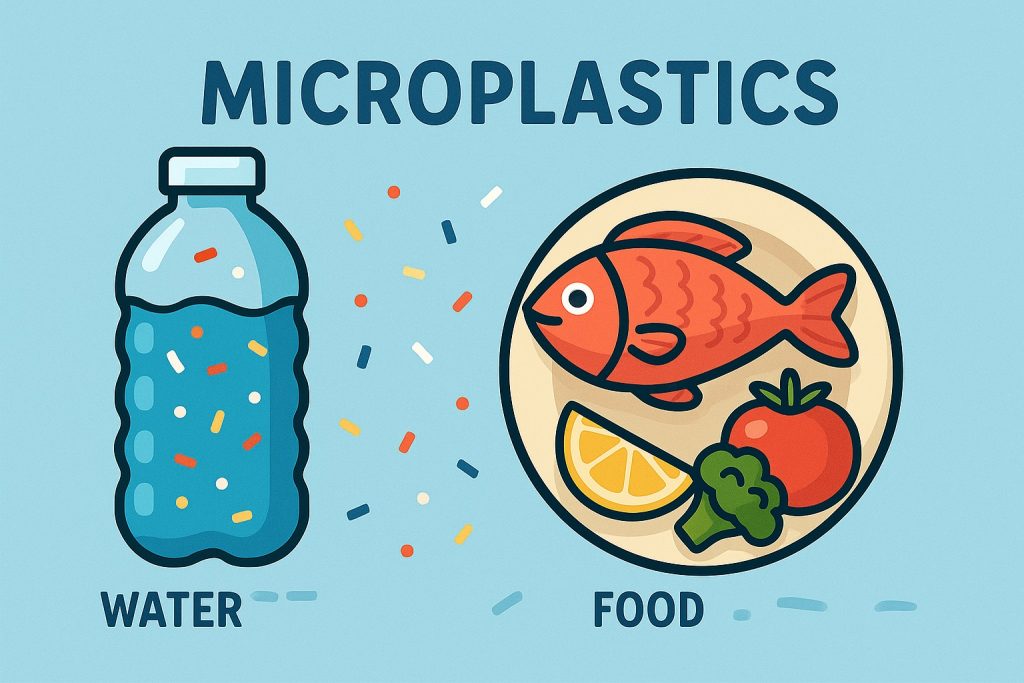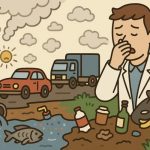Plastic is everywhere — from packaging and clothing to electronics and construction materials. But as plastic breaks down, it creates a far less visible and more dangerous form: microplastics. These tiny plastic particles have infiltrated oceans, soil, drinking water, and even the food we eat, raising serious concerns for environmental and human health. This article explores where microplastics come from, how they spread, and why they pose such a hidden threat.
What Are Microplastics?
Microplastics are plastic particles smaller than 5 millimeters. They come in two forms:
- Primary microplastics — manufactured intentionally, such as microbeads in cosmetics or industrial abrasives
- Secondary microplastics — formed when larger plastic objects break down from sunlight, friction, or weathering
These particles are so small that they can pass through water filters and evade detection — yet they are present in nearly every corner of the planet.
Where Do Microplastics Come From?
Microplastics are released from many everyday sources, including:
- Washing synthetic clothing, which sheds microfibers
- Tires, which wear down into fine particles on roads
- Plastic packaging, which fragments over time
- Cosmetics and cleaning products containing plastic microbeads
- Fishing gear, ropes, and plastic waste at sea
Even the degradation of disposable masks and gloves contributes to the spread of microplastics.
How Do They Enter Water and Food?
Microplastics are now found in:
- Bottled and tap water
- Seafood, especially shellfish and small fish
- Salt, beer, honey, and fruit
- Air, especially in urban areas (we breathe them in)
Marine animals mistake microplastics for food, allowing these particles to enter the food chain. Humans, at the top of that chain, may ingest thousands of microplastic particles every year.
Why Are Microplastics Dangerous?
Though research is ongoing, microplastics pose several potential risks:
- They can carry toxic chemicals like pesticides, heavy metals, or flame retardants
- Inside the body, they may cause inflammation, hormonal disruption, or damage to the gut and organs
- They contribute to ecosystem stress, harming marine life and soil fertility
- They are almost impossible to remove once released into nature
Microplastics are not biodegradable — they accumulate and persist for centuries.
How Can We Reduce Microplastic Pollution?
While eliminating microplastics entirely is difficult, we can reduce our exposure and slow their spread:
- Avoid single-use plastics and excessive packaging
- Use natural fabrics instead of synthetics
- Choose products labeled “microbead-free”
- Install filters on washing machines
- Support plastic bans and waste reduction policies
- Properly recycle and dispose of plastic items
Collective action — at the individual, industry, and government level — is essential.
Glossary
- Microplastics — Tiny plastic particles less than 5 mm in size
- Primary microplastics — Plastics manufactured at microscopic size
- Secondary microplastics — Particles formed from the breakdown of larger plastic
- Microbeads — Tiny plastic beads found in some personal care products
- Bioaccumulation — Build-up of substances in the tissues of living organisms over time


